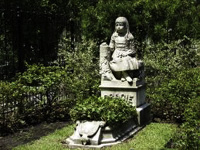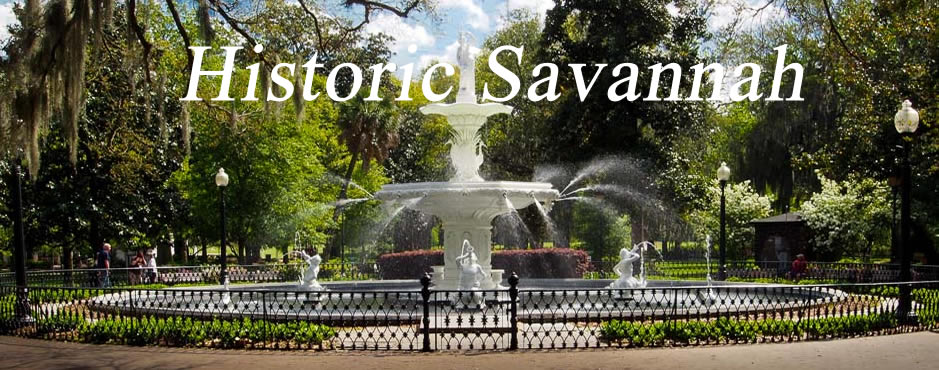 Bonaventure Cemetery
Bonaventure Cemetery
Bonaventure Cemetery
 Bonaventure Cemetery
Bonaventure Cemetery
Bonaventure Cemetery
Thunderbolt, GA 31404
Hours:
8:00a - 5:00p
Bonaventure Cemetery lies along the Wilmington River, a short distance from Savannah's "historic district. Settled by Colonel Mylryne about 1760, he built a red brick plantation house on the land and named the place Bonaventure, which means "good fortune" in French. The plantation was the site for Mary's (Mulryne's daughter) wedding to Josiah Tattnall in 1761. The property was seized during the Revolutionary War after Mulryne and Tattnell declared themselves Loyalists and left for England. Tattnall's son returned after the war and purchased the home from James Habersham. The property remained in the hands of the family until 1840 when it was sold to Captain Peter Wilberger, owner of the Pulaski house for use as a cemetery. The city of Savannah purchased the cemetery in 1907.
Many of Savannah's statesmen, citizens and soldiers are buried in Bonaventure Cemetery in the shade of 250-year-old moss-laden oak trees. Savannah founders Noble Wimberly Jones and Edward Telfair are buried here along with some prominent Civil War Generals. In more recent years, famous Savannah celebrities laid to rest in Bonaventure include singer and lyricist Johnny Mercer and poet Conrad Aiken.
In a cemetery of many unusual tombstones, perhaps one of the most unique is one in the shape of a piano. The interesting tombstones and vaults, the colorful camellias and azaleas, and the wonderful old live oak, dogwood and magnolia trees have made the cemetery one of the most photographed in the country.
Though not Savannah’s oldest cemetery, Bonaventure is certainly its most famous and hauntingly beautiful. Its Southern Gothic has captured the imaginations of writers, poets, naturalists, photographers and filmmakers for more than 150 years.
The approximately 100-acre cemetery is also historically significant as a reflection of changing views on death and dying in the Victorian era. As death became more romanticized and ritualized during this period, cemeteries became lush, beautiful “cities of the dead.”
In recent years, Bonaventure Cemetery has become one of Savannah's most popular tourist attractions, primarily due to its role in Berendt's best-selling book, "Midnight in the Garden of Good and Evil" (1994), which featured a cover photo of the now-famous "Bird Girl" statue that was previously located in the Bonaventure Cemetery.


